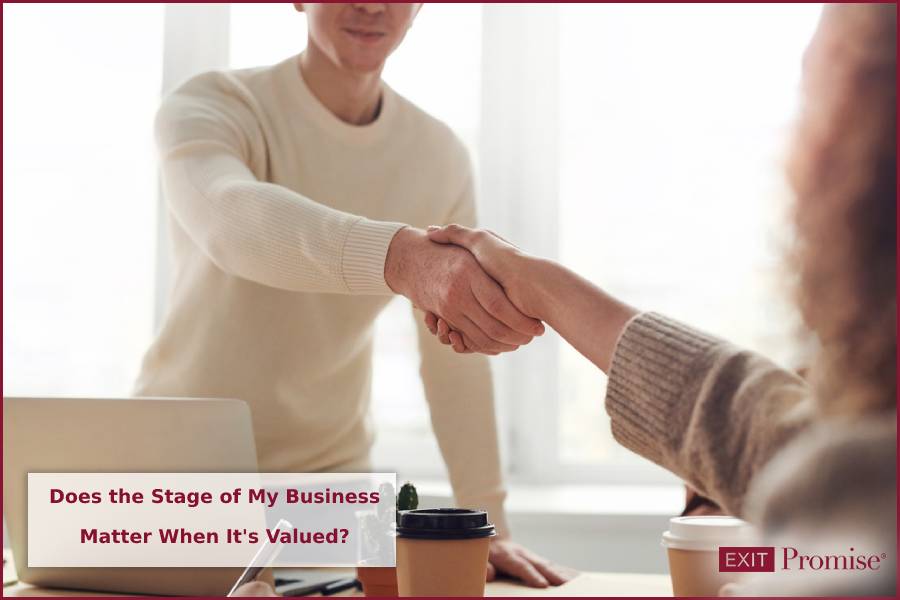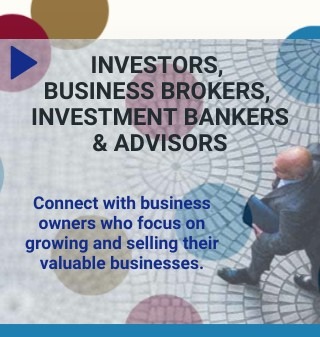- Maximizing After Tax Proceeds When Selling Your Business - June 7, 2024
- Understanding the Accredited Investor Rule 501 of Regulation D - February 27, 2024
- Which is Best – Business Broker, M&A Advisor, or an Investment Banker? - October 2, 2023

Have a Question?
Ask your Question below!
One of our investors or advisors will answer.
Earlier this week, I called out for your most pressing questions about selling a business on several social media channels.
The common theme among the questions raised tells me many business owners are uncertain about how to establish a value for their business, regardless of its stage of development. In various ways, readers asked me about how to value ideas, start-ups and mature businesses.
I’ll tackle the various business stage valuations one at a time:
The first question is “How do I value a business idea for investors?”
An Idea is Not a Business
The late Peter F. Drucker said it so eloquently when he declared “Ideas are cheap and abundant; what is of value is the effective placement of those ideas into situations that develop into action”. And without action, an idea has no value. Period.
In my opinion, there is a wide divide between the vast number of Wantrepreneurs and a successful Entrepreneur. Until an idea is tested and developed, it is virtually impossible to place a monetary or commercial value on it.
If however you are able to successfully file for and obtain a patent for an idea, it may be possible to sell or license the patent to a business enterprise for its commercialization. In fact, if you chose to patent an idea, this is exactly what I would recommend you do. Otherwise you will need several hundred thousand dollars to invest in protecting your patent rights. And that’s before you make a single sale.
If you’ve got an idea for a product and/or service and you are seeking investment from friends, family or an Angel who shares your passion for your idea and is confident in your abilities, your first round of investment should include:
- Founder/Inventor’s Financial Capital – without this, subsequent rounds of financing from other sources of capital will be difficult to obtain; and
- a definition of how the capital raised will be used; and
- a set of milestones and its respective timeline before another round of capital may be raised; and
- an accountability reporting process for investors; and
- a definition of the roles and responsibilities for founder/inventor, investors, and other key employees.
In such a situation, the value of a business idea is decided between the parties and is often tied to the limited risk an investor is willing to take to assist the founder/inventor in determining if the idea has commercial merit.
Another business owner asked me “How do I sell a business when it’s in the start-up stage?”
A Start-up Must Prove its Business Model is Viable
Start-ups are ideas in search of a profitable business model. And until the start-up is profitable, most buyers will heavily discount its value. Unless of course, you’ve developed a product or service that a dominant market player with a lot of cash sorely needs or a set of employees ripe for a talent acquisition.
If that’s the case, and you successfully sell your start-up for an incomprehensible multiple of sales (because you never reached EBITDA), you’re now the equivalent of a Rockstar. Congratulations!
Let’s set that notion aside and talk about how the rest of the world’s start-ups are valued.
Once a start-up has revenue, it is on its way to determine the level of sales and operating expenses it will require to reach profitability known as a breakeven point. Knowing when a start-up should reach its breakeven point is a key to a start-up’s success.
Armed with this information, the value of a start-up for a buyer or investor will be based on these additional factors:
- Revenue over the past 12 months
- Gross Profit Margin
- Net Profit Margin – although, profitability is not absolutely necessary in a start-up
- Industry Size – Is the opportunity in a $1B market or a $1M market? Are there geographical limitations?
- Overhead Costs – Is this a retail business with real estate requirements or a SAAS business with low overhead?
- Booked Future Sales – Contracts, Purchase Orders, etc.
- Does the start-up solve a user’s problem or serve a user’s passion?
- Potential Investor or Buyer’s ability to bring something to the start-up otherwise absent, such as introductions to synergistic relationships, selling opportunities and/or reduction of costs
If there are any shortcomings in one or more of the eight factors noted above, the start-up may not be in a good position to sell its business or take on an investor for an attractive valuation. It may simply be too soon to take on new investors or sell. Or the business model may not be working and a pivot may be needed.
The last question asked was “What is the best way to come up with a fair valuation for my business when I sell it?”
Mature Businesses are Measured by Cash Flow First
Once a start-up has matured and is producing consistent cash flow, proving viability is no longer a concern to a buyer (or investor). Instead, the type of buyer and the business’ cash flow will have the most impact on how a mature business is valued.
A business buyer who is a competitor may desire to acquire your business for strategic purposes. Such a buyer may want to expand into your geographical area quickly or to acquire the knowledge and business contacts your employees possess. For these, and many other reasons, your business would command a higher valuation and price from a strategic buyer.
On the other hand, a financial buyer who simply desires a good return for his investment dollars will likely value your business at a lower amount.
Regardless of the type of buyer your business is sold to, all buyers first look at cash flow from operations as a factor to determine its value. Depending on the industry and size of the business, cash flow may include measurements such as EBIDTA (Earnings Before Interest, Depreciation, Taxes and Amortization), EBIT, Seller’s Discretionary Income, and in some cases Annual Sales). A ‘multiple’ is applied to the appropriate cash flow measurement which differs by industry and changes over time.
The product of the cash flow multiple becomes the basis for valuation. Adjustments are then applied based on the particular circumstances and other factors.
In addition to the buyer type and cash flow there are many other factors which will impact the mature business’ valuation. These factors may include:
- Fixed Assets to be transferred to a buyer
- Liabilities to be assumed by a buyer
- Current Assets such as cash, investments, accounts receivable and inventory transferred to a buyer
- Intangible assets used in the business (Patents, Trademarks, URLs, Trade Secrets, etc.)
- Goodwill
- Lease rights and obligations
- Contract rights and obligations
- Pension Plan Liabilities
- Cost of Capital
- Future Industry Growth
- Revenue Growth Record over past three years
- Projected Company Growth one-to-three years
- The M&A Environment
Unfortunately for the business owner, a single formula to compute the value of a business does not exist, regardless of its stage of maturity.
Nonetheless, it’s important to understand how business valuation factors change as the entrepreneur begins with a business idea which evolves into a start-up and then ultimately matures into a viable business.
















Well organized and great points Holly! I will share this with all my clients who want to sell their ideas.
Thank you, Neal!
Hi there,
What are the reasons that P&Ls don’t match tax returns?
Nolan:
The main reasons for this are:
1. The tax preparer did not update the books with any Journal entries (changes) made when preparing the tax returns, such as entering depreciation or other non-booked entries; or
2. The tax preparer did not prepare the return using all the information in the books (such as entering the tax return using ONLY the the P&L and ignoring the balance sheet information).
Both of these are common situations with inexperienced tax preparers.
In my experience as a business broker Nolan, it’s normally because:
A) The CPA applied a legitimate tax treatment to reduce taxes at the end of the year, but the changes that were made where not translated back to the P&L.
B) The taxes were in Cash accounting while the P&L were in accrual accounting, and there was a conversion made.
C) There were some less legitimate efforts taken to reduce taxes.
Nolan,
I’ll add to the comments that many businesses legitimately have separate management books and tax books as they have different set of accounting rules. Schedule M-1 on the tax return will show the reconciliation of book income to taxable income. Some common differences include difference in book vs. tax depreciation expense and non-deductible travel and entertainment.
For example, for tax purposes, the taxpayer may have taken bonus depreciation and written off the asset in the year of purchase for taxes but depreciated the asset over several years for book purposes.
Another example is meals and entertainment. For tax purposes, meals may be classified as 50% deductible, where on the books they would show the full expense.
In summary, there are many book vs. tax adjustments that are legitimate differences and the accounting method (cash, accrual, modified accrual, etc.) could be different on the tax returns and books.
That’s super helpful! Thanks Jason!
Hello, your post is excellent (5 STAR – I clicked on incorrect star icon). Question: our business was established 42 years ago, and we need to retire. Our business is an icon that has served the Santa Barbara community over many customer generations. How do you evaluate earnings and revenue numbers to determine business value relative to 2020-2021 pandemic lockdowns and affected sales activity? Numbers in years prior to 2020 showed consistent growth. Revenue growth resumed late 2021 and has continued to date. However, earnings are challenged due to wage inflation and other operational increases. Thank you for any guidance.
Nina,
Business disruptions secondary to the COVID pandemic have been fairly common. Congratulations for surviving the pandemic.
In cases where revenues and subsequent net income has been disrupted, the most common approach would be to average the last three to four years using a weighted average as opposed to the normal arithmetic average. Unfortunately, we can’t pretend the pandemic lockdown didn’t occur however by smoothing the results of the last few years a weighted average can mitigate its impact on overall business performance.
Going forward, I would suggest business valuation using a limited (3-year) Discounted Cash Flow (DCF) scenario to reflect expectations of future performance. A DCF can be developed for Best, Middle and Worst-case scenarios with these results weighted again to reflect future expectations.
Assuming you wish to sell the business and retire, an experienced broker should also be able to show value in areas such as your company’s longevity, growth history, systems in place, trained workforce, etc.
Good evening,
How can you protect your personal assets if you are a sole proprietor?
Hi Larrymi,
Being a sole proprietor does not offer you any form of protection for your personal assets if sued by one of your customers or another party. Remember, anyone can chose to sue you and/or your business. The case need not have any merit whatsoever.
You could purchase business liability insurance for some protection.
You could purchase a personal liability umbrella insurance policy to offer additional protection to you and your family.
A qualified insurance professional should be able to offer you options and describe how the policies would work for your particular circumstances (whether you’re operating your business as a sole proprietor or as a separate business entity).
Hope this helps!